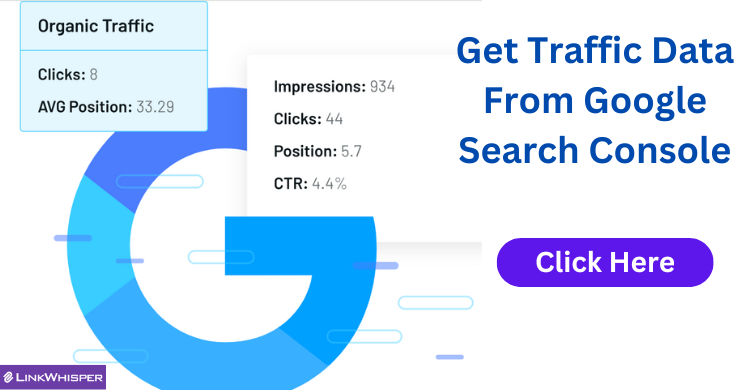What is partner marketing?
Partner marketing involves utilizing different marketing strategies to establish strong partnerships with other brands. One of the key responsibilities of partner marketers is the acquisition of new partners, as well as promoting existing partners and maintaining communication with their respective customer base. Several instances of partner marketing include:
- Co-branded blog posts
- Joint webinars
- Whitepapers
- Case studies
- E-books
According to Darren Sepanek, Head of Partnerships at Elevar, when people hear the term “partner marketing,” they often mistakenly believe that it can be achieved simply by adding a partner’s logo to a single-page document. However, Sepanek emphasizes that partner marketing entails much more than that. It involves effectively conveying your company’s narrative and illustrating its worth to both partners and customers. In essence, it centers around assisting partners in promoting the value of your company or the collective value that you and your partners bring to the market.
are responsible for establishing and managing partnerships with external organizations to drive mutual growth and achieve business objectives. However, due to the lack of a standardized definition, the specific responsibilities and duties of a partner marketer can differ depending on the organization.
- Create value proposition stories that target both potential partners and consumers.
- Maintain deep relationships with partners that allow the PM to monitor the partner’s marketing efforts and goals and spot co-marketing opportunities.
- Ensures the “partnerships” brand at their company is strong, enticing new partners to join the ecosystem.
- Find creative ways to re-package webinars, blogs, and other marketing materials that amplify partners.
- Make sure that partnerships are included in larger company-wide marketing efforts.
- Enables re-seller partners with messaging, templates, and other brand assets.
- Generate leads for potential partners and referrals from existing partners through targeted marketing campaigns.
- Organize webinars, happy hours, and other partnerships events.
- Create written and/or visual assets for use by the partnerships team or partners.
Why your general marketing just won’t cut it
According to the partner marketers we interviewed, involving the company’s general marketing departments in executing partnership initiatives may be effective in some cases. However, they believe that this approach is not a long-term solution for expanding a partner program and advocate for creating dedicated positions for partner marketers. Zimmerman emphasized the importance of incorporating partner marketing as a fundamental aspect of a growth strategy to achieve partner-led growth.
Here’s the reason why a general marketing department usually lacks the capacity to develop comprehensive partner marketing strategies, even though they may have sufficient time to conduct webinars or produce co-branded content.
- They don’t focus on the fundamental storytelling of partnerships. Even if a general marketing team can handle the lift of partnerships specific asset creation and event production, they miss out on the more fundamental storytelling that partner marketers specialize in for two specific reasons: First, it’s simply not their job. “The problem with relying on corporate marketing is that they have other things to do,” Sepanek said. “They have their own goals building the brand and their goals and objectives typically aren’t focused on partner relationships and going to market with partners.”
- Second although related, general marketing departments do not have deep relationships with partners. While a general marketer’s audience is the end consumer, a partner marketer understands that their audience is a combination of their end consumer, their partner’s end consumer, and the partner themselves. As a result, a partner marketer understands their partner’s motivations and marketing efforts deeply. They can then put together all of the pieces and tell a holistic story that works for the audience they’re going after.
The benefits of partner marketing
If you’re still undecided, here are the benefits that have been reported when hiring a dedicated partner marketing role.
- Partner marketers optimize your partner-influenced revenue. Khoubian’s team carefully tracks their attribution on partner referrals (which then impact partner-sourced revenue.) 60% of overall referrals a month on average are influenced by partner marketing. For a partnerships team looking to increase their partner-influenced revenue, bringing on a team of partner marketers like Khoubians could be the trick.
- Partner marketers bring new partners to you. “Participation in co-marketing activities has driven so much brand awareness for us because partners are now asking us to participate in their campaigns,” Kolinsky shared. “They see us as being up there with some of the big players in our space, despite the small size of our partner marketing function.” Sepanek affirmed this, sharing that every partner marketing-led event or webinar she’s participated in has had a higher likelihood of attracting new partners than those not led by a partner marketer specifically.
- Partner marketers balance out the “sales-y” side of partnerships. With many partnerships teams full of ex-sales people, it can be difficult to create a partner program that puts reciprocity before sales pitches. Marketers are trained to focus on appealing to an audience rather than on closing a deal (lead generation over lead closure). According to Sepanek, striking a balance between the two is actually crucial for a healthy partner program. “Partner marketers play a crucial role in developing a strategic alliance with partners, beyond the sales relationship,” she told us. In her experience, “partner marketers take the pressure off of sales to demand leads from partners, making lead generation collaborative and mutually beneficial for all concerned.”
As the ecosystem era progresses, partner programs will need to find innovative approaches to reach out to new partners and consumer audiences by collaborating in marketing efforts with current partners. Partner marketers could be the solution to meet this increasing demand — it would be advisable to discuss this with your hiring manager.
1. Establish Mutual Goals
In order to effectively implement a partner marketing strategy, it is essential to clearly state your objectives and identify the crucial metrics necessary for gauging your progress towards those objectives, just like any other marketing campaign.
When setting goals, it is crucial to ensure that they are specific, measurable, attainable, realistic, and timely. In the case of smaller startup companies, the goal may be as basic as raising brand awareness. However, as the business grows, partner marketing efforts may evolve to include shared lead generation and revenue streams. The key is for both partners to be in agreement regarding marketing goals. By working together towards a shared objective, the effectiveness of your strategies will greatly increase.
2. Ensure Careful Reporting
After setting your goals and determining the essential metrics to monitor, it is crucial to establish a reporting system that enables you to determine which leads can be credited to each partner. This becomes particularly significant if you are providing any form of financial incentives. For instance, in a lead sharing framework, it is necessary to accurately determine the number of leads generated by your partner. Similarly, in a revenue share model, you must ascertain the precise impact of their actions on revenue gains, down to the exact dollar amount.
Ensure that you have the necessary tools and procedures to distinguish between contacts obtained through referrals and those obtained directly through your company. Employ tracking URLs featuring customized UTM parameters to identify the origin of partner-related contacts, determine the specific channels through which these referrals are generated, and track the effectiveness of various co-marketing campaigns they are contributing to.
If you have a large partner ecosystem, it is crucial to have software like PartnerStack that can automatically create custom tracking URLs for you, saving you the effort of setting up each URL individually. Utilizing software that automates certain reporting features is essential for managing and organizing a vast partner network.
3. Engage Guest Blogging
One effective method of improving SEO rankings, driving more traffic to your website, building trust, and providing added benefits for both your prospects and customers is through guest blogging. By collaborating with subject matter experts from partner organizations, it is possible to tap into each other’s audience and expand the reach of your company, while simultaneously offering valuable and up-to-date content to educate potential customers.
You may consider incorporating a guest blog into your editorial calendar at intervals of weekly, monthly, or quarterly basis, depending on the expectations and quotas you establish for your partnership. It is important to note that the shared blogs between partners should not only focus on promoting your brand, but also aim to provide prospects with relevant and informative content.
4. Co-Host Events
Utilizing events in partner marketing is a highly effective strategy that yields great results. By utilizing each other’s databases to promote the event, you can achieve higher attendance and engagement rates. When organizing a significant in-person event, both your company and your partner’s company can share the expenses, making them more economical compared to hosting them individually.
Moreover, events offer an excellent opportunity to strengthen the partnership and enhance credibility within the industry. For instance, by participating in HubSpot events, New Breed showcases its proficiency with the HubSpot platform, thereby solidifying its reputation among prospective clients.
5. Create Co-Branded Content
By now, it is common knowledge that content reigns supreme in inbound marketing. Collaborating with partner companies to create co-branded content, such as e-books, white papers, or webinars, is an excellent method to enhance the worth and extend the reach of that content.
Enhance brand recognition and explore potential new markets by collaborating with your partners to produce valuable content that appeals to both your target customer segments. Keep in mind that the content you generate should genuinely benefit your audience, hence invest sufficient time in strategizing a remarkable co-branded content initiative, rather than creating content merely for the sake of it.






